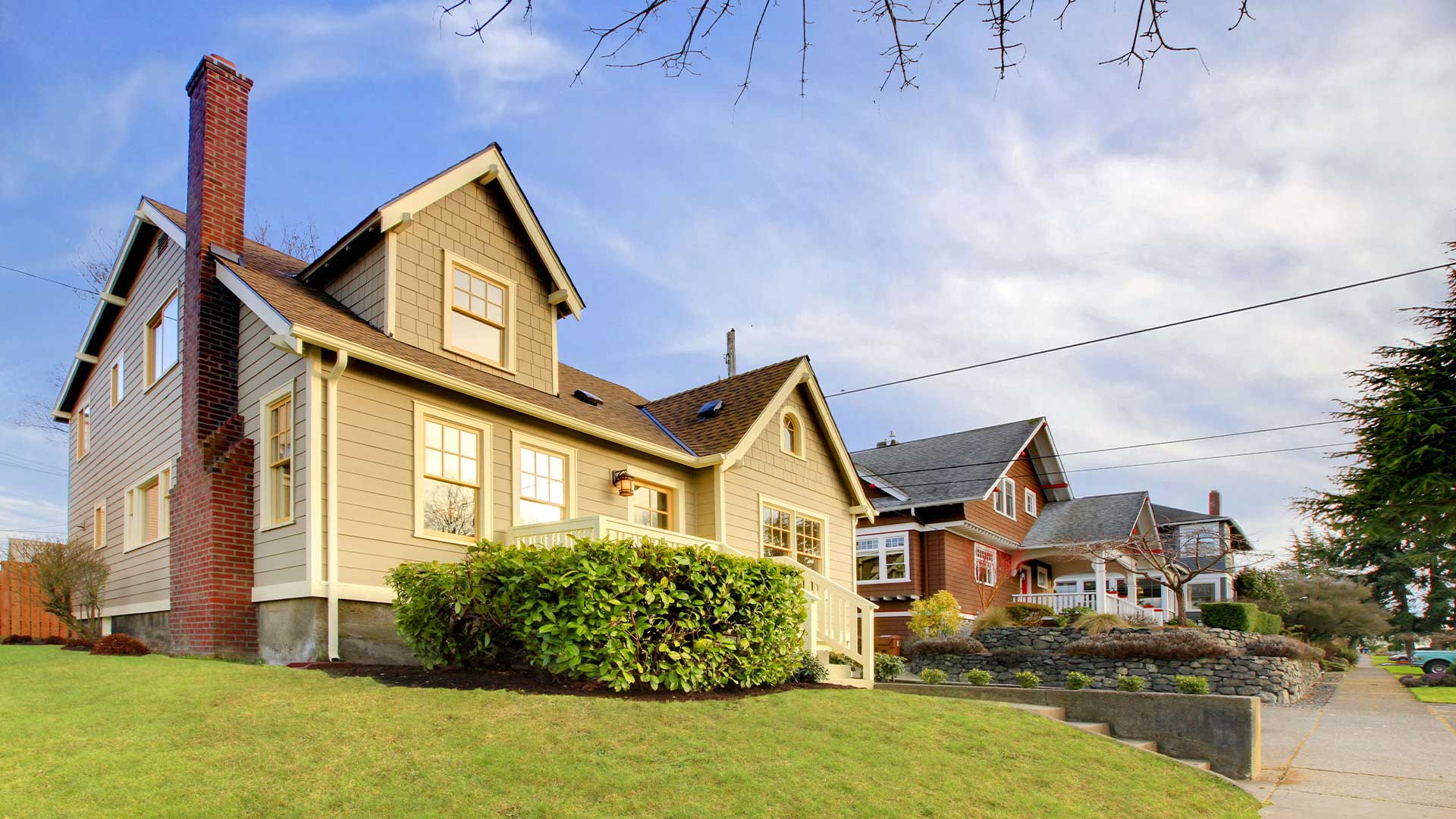
What are the requirements to buy a house?
As a first-time home buyer, the question you need to ask yourself is, “Do I qualify for a mortgage?” If you do, odds are you’re in good shape to buy a house.
This starts with knowing your home loan options, as well as the minimum requirements to qualify. Lenders will look at your credit score, income, savings, debt, and documents to find out if you’re mortgage-eligible.
The good news is, meeting these requirements is likely easier than you think.
Find out if you qualify for a mortgage (Apr 5th, 2021)In this article (Skip to…)
Credit requirements to buy a house
Believe it or not, you don’t need a high credit score to get a mortgage. Different mortgage programs have different credit requirements, and sometimes you can qualify with a credit score as low as 580.
Keep in mind, though, a lower credit score often means paying a higher mortgage rate.
As far as minimum credit requirements to buy a house, here’s what to expect:
- Conventional home loan: Minimum credit score of 620
- FHA home loan: Minimum credit score of 580, although some lenders might allow a score as low as 500 with 10% down
- USDA home loan: Minimum credit score of 640
- VA home loans: The U.S. Department of Veterans Affairs doesn’t set a minimum credit score, but most lenders require at least 620
To be clear, just because you can qualify for a mortgage with a low score doesn’t necessarily mean you will.
Lenders take more than your score into consideration. They’ll also review your credit reports, paying close attention to your most recent credit history.
Generally speaking, to qualify for a mortgage loan — even with a low credit score — you can’t have any defaulted loans or late payments on your credit report within the past 12 months.
This isn’t a hard or fast rule, though. So you might still qualify with one or two late payments during the past 12 months, but only if the lender accepts your explanation for lateness.
Also, there’s typically a waiting period for getting a mortgage after a bankruptcy or foreclosure. These waiting periods vary by home loan program. For example:
- Conventional loan — You must wait four years from your discharge date after a chapter 7 or 11 bankruptcy, and two years after a chapter 13. The typical waiting period after a foreclosure is seven years, or three years if you have extenuating circumstances
- FHA loan — You must wait two years from your discharge date after a chapter 7, and one year after a chapter 13. There’s no waiting period after a chapter 11 bankruptcy. You must wait three years after a foreclosure
- VA loan — You must wait two years from your discharge date after a Chapter 7, and one year after a chapter 13. There’s no waiting period after a chapter 11. After a foreclosure, the waiting period is two years
Even though lenders will look at your credit history and credit score, it’s possible to get a mortgage with no credit history.
Some loan programs, such as FHA, VA, and USDA, allow the use of non-traditional credit on a mortgage application. You could establish creditworthiness through things like utility payments, rent payments, insurance payments, and cellphone payments.
Even some conventional lenders will accept a 12-month history of rent and utility payments in lieu of a credit history, but not all.
Verify your mortgage eligibility (Apr 5th, 2021)Income and employment requirements to buy a house
Next to credit, steady income and employment are other big requirements for mortgage approval. The lender must confirm that your income is consistent and enough to afford a mortgage payment.
For this reason, most lenders require 24 months of consecutive employment before approving a home loan application.
This applies to self-employed mortgage borrowers, too, in which case you’ll provide your business and personal tax returns for the previous two years. Income statements must show consistent income over the previous 24 months, either remaining roughly the same or increasing.
There’s no minimum income to get a mortgage, but some loan programs have a max income limit.
Since a self-employed borrower’s income can fluctuate from year to year, mortgage lenders often average out their income over a two-year period, and then use this figure for qualifying purposes.
Be mindful, too, of possible income requirements for the type of loan you want. There’s typically noincome requirement, but some programs do have income limits.
With USDA, for example, total household income must be at or below 115% of the median household income for the area. And if applying for Fannie Mae‘s HomeReady or Freddie Mac‘s Home Possible, your income must not exceed the limit set for your area.
Savings for the down payment and closing costs
Buying a house also requires meeting down payment minimums.
With a conventional loan, you can expect to pay a minimum down payment between 3% and 5% of the purchase price. The minimum on an FHA loan, backed by the Federal Housing Administration, is 3.5%.
USDA and VA home loans do not have minimum down payment requirements. (Yes, that means you can buy a house with $0 down if you qualify.)
These days 20% down isn’t required. But some borrowers choose to put 20% down to avoid the monthly cost of private mortgage insurance (PMI).
Your down payment isn’t the only upfront expense, though. You’re also responsible for closing costs.
If you’re having trouble saving money, you might qualify for a down payment assistance program. Ask your loan officer, Realtor, or real estate agent about local DPA programs.
The seller might pay some of your closing costs. And sometimes, mortgage lenders will give a credit to cover a borrower’s closing costs, in exchange for a higher mortgage rate.
But on average, expect your closing costs to be an additional 2% to 5% of the loan amount.
That means if you’re making a low down payment of 3%, the total amount of money you need to save will be more like 5% to 8% of the sale price when upfront fees are added in.
If you’re having trouble saving money, you might qualify for a down payment assistance program. These programs provide funds in the form of grants or loans, which you can use to pay your down payment and/or closing costs.
Some down payment assistance programs have household income limits. But many are lenient, and they’re meant to make the home buying process more affordable — especially for first-timers.
Check your low-down-payment eligibility (Apr 5th, 2021)Debt requirements to buy a house
Your existing debts will have an impact on your qualified loan amount, and therefore your home buying budget.
High debts (like credit card debt, student loans, and other installment loans) can sometimes prevent qualifying for a mortgage. Low monthly debt, on the other hand, can help you afford a more expensive home.
Your mortgage lender will calculate your debt-to-income ratio (DTI) to determine your qualifying amount. DTI is the percent of your gross monthly income that goes toward minimum debt payments.
Lenders look at the money left over after your regular debts are paid to see how much you can afford for a monthly mortgage payment.
An ideal DTI for different mortgage programs is as follows:
- 36-43% for a conventional loan
- 43% for an FHA loan
- 41% for a USDA loan
- 41% for a VA loan
Some lenders allow higher ratios, though, if you have ‘compensating factors.’ These include an excellent credit score, a large down payment, or high cash reserves.
Ideally, the mortgage payment on your new home shouldn’t exceed 28% to 31% of your gross monthly income.
Also note that your other homeownership costs — like homeowners insurance and property taxes — will be included in your debt-to-income ratio. A good mortgage calculator will help you estimate these costs to find your ‘real’ eligibility.
Verify your mortgage eligibility (Apr 5th, 2021)Documentation needed to buy a house
Buying a home also requires supplying your lender with documentation. Along with giving authorization for the lender to check your credit history, you’ll need to provide the following list of documents:
- Tax returns, paystubs, and W-2s for the previous two years
- Employment verification letter
- Bank statements and information about other assets
- Photo ID
- Rental history
- Year-to-Date Profit and Loss statement, if you’re self-employed
Depending on your circumstances, you might provide other documentation, too.
If a family member will gift your down payment and closing costs, for instance, you must provide a gift letter.
This provides information about the donor and the amount of their gift. And if you’re using alimony or child support payments for qualifying purposes, you’ll provide copies of the court-order.
Gathering these documents before you apply can help the process go more quickly. But, if you’re not sure what you’ll need, don’t worry — your mortgage adviser will walk you through the process step by step.
Getting preapproved for a mortgage
You can look at general requirements to buy a house on your own, and figure out if you might qualify based on your finances.
But your mortgage lender gets the final say. So when you’re ready to get serious about buying, your first step is to get pre-approved for a mortgage.
Some home buyers make the mistake of shopping for a property before meeting with a lender. But with a pre-approval, you’ll know what you can afford before starting the process.
This way, you only look at houses within your price range. Plus, a pre-approval letter indicates that you’re a serious buyer. In which case, a seller will give more consideration to your offer.
When getting pre-approved for a mortgage, contact at least three mortgage lenders to compare interest rates and terms.
Home buyers can often lower their monthly payment and save thousands just by shopping around and lowering their rate.
Verify your new rate (Apr 5th, 2021)



